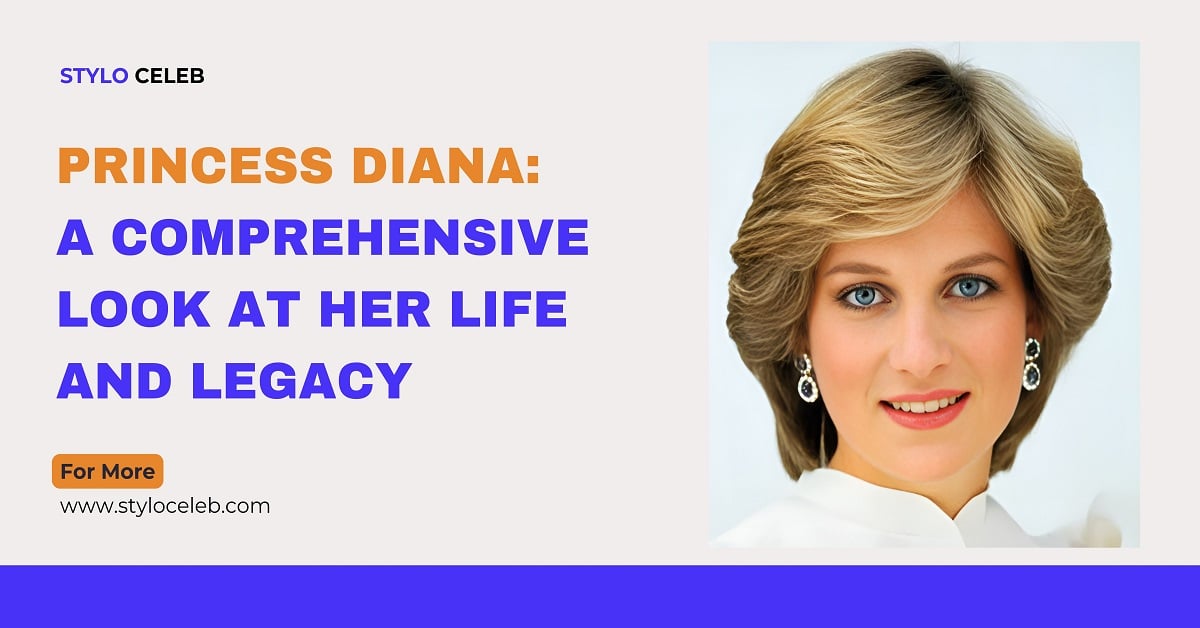Princess Diana, born Diana Frances Spencer on July 1, 1961, is one of the most beloved figures in modern history. Known as the People’s Princess, she captured hearts worldwide not only through her royal duties but also through her profound humanitarian work and iconic fashion sense.
This article explores various facets of her life, including her physical attributes, personal experiences, career, and lasting legacy.
Quick Bio
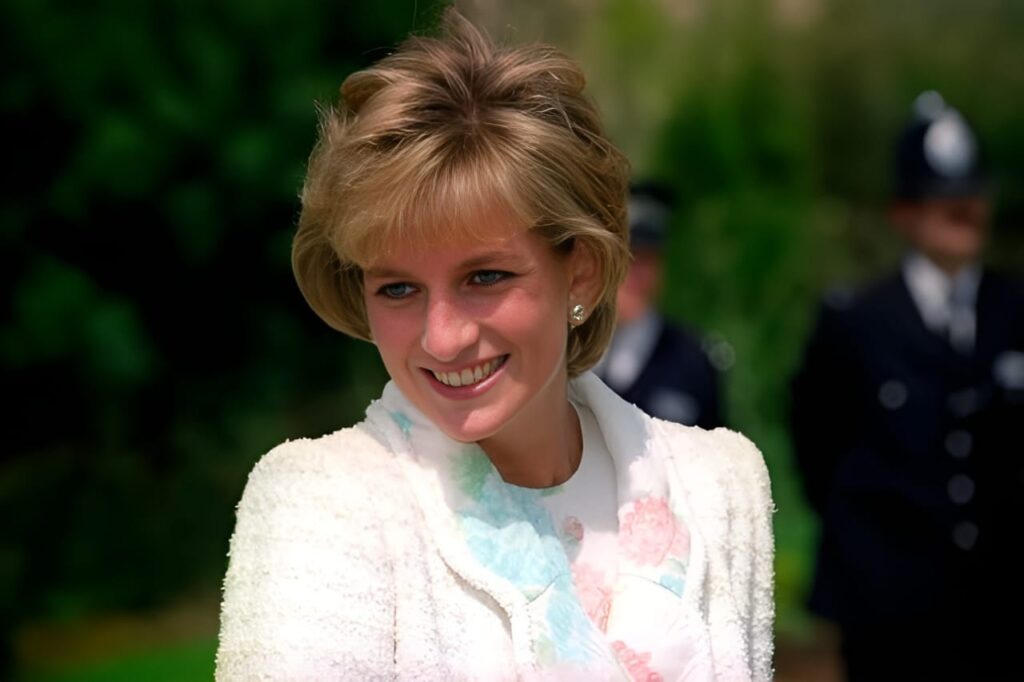
Before diving deeper, here are some quick facts about Princess Diana:
| Attribute | Details |
|---|---|
| Height | 5 feet 10 inches (178 cm) |
| Weight | Approximately 130 lbs (59 kg) |
| Age at Death | 36 years |
| Net Worth | Estimated at $31 million at the time of death |
| Eye Color | Blue |
| Hair Color | Blonde |
These key details provide a snapshot of the woman who would become a global icon.
Early Life
Childhood
Diana spent her early years at Park House, Sandringham, Norfolk, where her father, John Spencer, 8th Earl Spencer, worked as a royal equerry.
Growing up in such a privileged environment, Diana was exposed to the complexities of aristocratic life. Her childhood was marked by a mix of privilege and emotional turbulence.
The young Diana enjoyed a relatively carefree early life, participating in various activities like ballet and swimming. However, her world changed dramatically when her parents divorced when she was just seven years old.
This pivotal moment had a profound impact on her. The divorce led to her mother’s relocation to Scotland and her father’s assumption of custody, which meant Diana had to navigate the challenges of familial separation.
This experience shaped her understanding of love and relationships, leading her to develop a deep sense of empathy for others facing similar struggles.
Family Background
Diana belonged to the noble Spencer family, known for its long-standing ties to the British royal family. She was the youngest of four siblings: Charles Spencer, Sarah Spencer, and Jane Spencer.
The Spencer family had a storied history, with connections to nobility dating back centuries. This lineage brought with it expectations of propriety and duty, factors that would influence Diana’s life choices.
Her mother, Frances Shand Kydd, played a significant role in her upbringing, instilling values of compassion and empathy. Despite the family turmoil, Diana’s early life experiences shaped her into a compassionate individual dedicated to helping others.
The dichotomy of her aristocratic upbringing and personal challenges cultivated a strong desire to connect with people from diverse backgrounds.
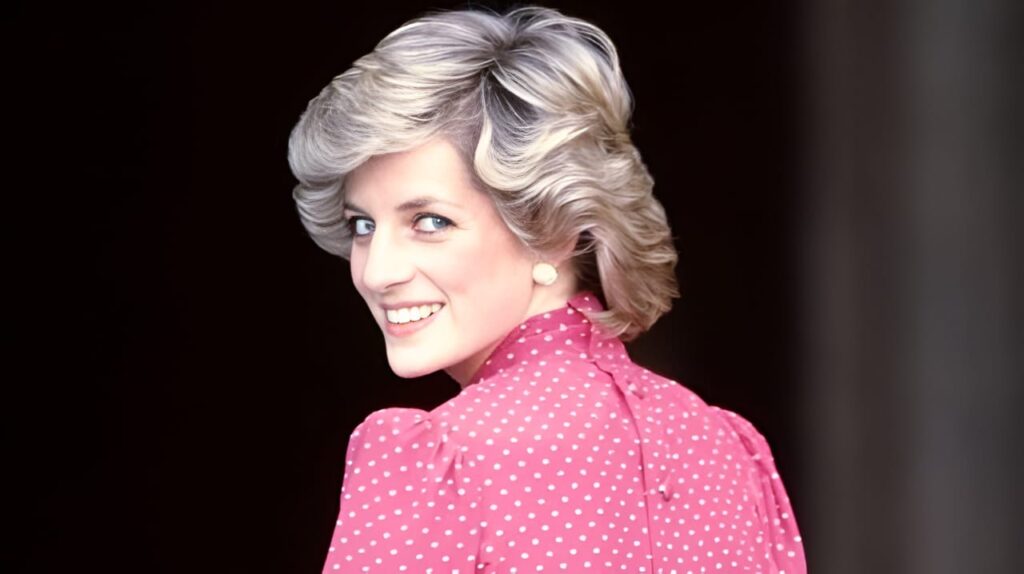
Physical Attributes
Height and Weight
Standing tall at 5 feet 10 inches and weighing around 130 lbs, Princess Diana had a slim body type that contributed to her graceful appearance.
Her striking blue eyes and blonde hair became defining features, making her one of the most photographed women in the world. Her height and poise allowed her to stand out in any gathering, contributing to her strong visual presence.
Graceful Appearance
Diana’s elegance was not merely about her physical attributes. Her poise and demeanor resonated deeply with the public. She possessed a natural charm that made her relatable, despite her royal status.
This grace was evident in her public appearances, where she effortlessly mingled with people from all walks of life.
Diana’s captivating smile and open demeanor allowed her to connect with individuals from diverse backgrounds. Whether visiting hospitals or engaging with marginalized communities, she made everyone feel valued and heard. Her ability to connect on a personal level enriched her public image.
Fashion Influence
Diana’s fashion choices often made headlines. She worked with renowned designers like David and Elizabeth Emanuel, who created her iconic wedding dress featuring a breathtaking 25-foot train.
The world watched in awe as she walked down the aisle, encapsulating the fairytale essence of her wedding to Prince Charles.
As her relationship with the media evolved, so did her fashion sense. The Revenge Dress, worn after her separation from Charles, exemplified her ability to blend vulnerability with strength.
This particular outfit, a stunning off-the-shoulder black dress, became a symbol of her independence and confidence, marking a turning point in her public persona.
Iconic Outfits
Diana’s wardrobe included pieces that reflected her evolving identity. Key outfits included:
- Polka Dots: A staple in her casual wardrobe, symbolizing her approachable nature and youthfulness. She often wore polka dot dresses during charity events, showcasing her blend of elegance and relatability.
- Puffy Sleeves: A trend she popularized, showcasing her flair for fashion while maintaining a royal image. These sleeves became synonymous with her early looks, adding a whimsical touch to her style.
- Statement Jewelry: Often donned during public appearances, her jewelry choices added sophistication to her look. Notable pieces included the famous Sapphire Engagement Ring, which later became a part of her sons’ legacies.
These outfits not only defined her style but also influenced fashion trends around the world. Designers sought to emulate her looks, and many women aspired to dress like her.
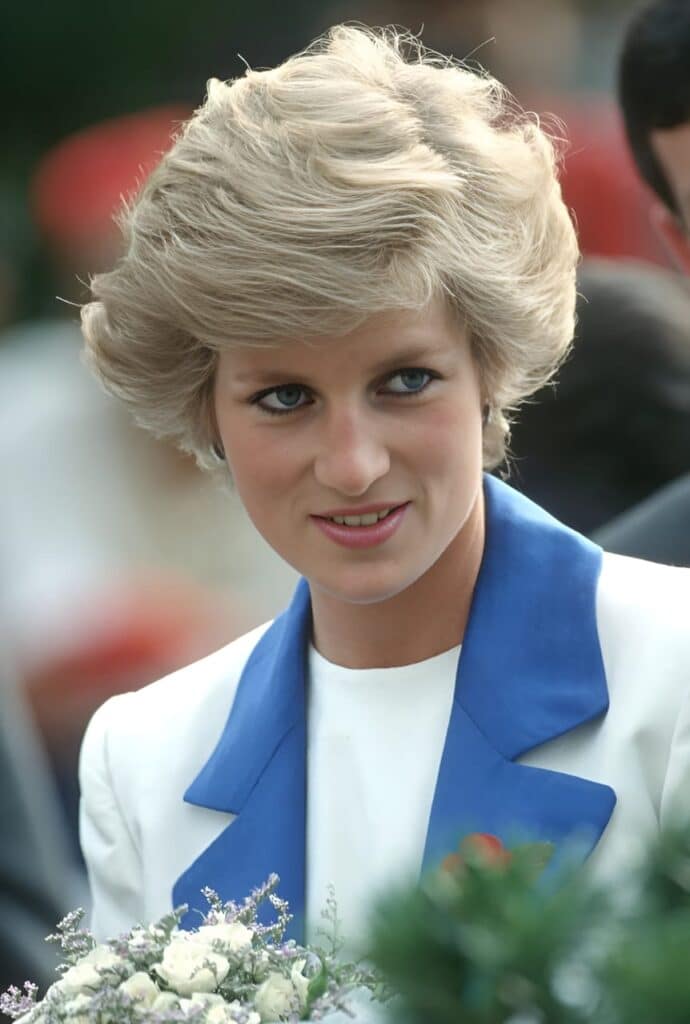
Public Perception
Media Coverage
The media’s fascination with Princess Diana was relentless. From her fairytale wedding to Prince Charles on July 29, 1981, to her every public appearance, she drew constant attention. While she embraced her role at times, the invasive coverage often took a toll on her personal life.
The tabloids scrutinized her every move, leading to a complicated relationship with the press. Diana often expressed her frustration with the media’s intrusion, yet she also understood the power of publicity.
She used the media spotlight to raise awareness for her charitable causes, turning what could have been a negative situation into a platform for good.
Public Adoration
Diana’s compassion and hands-on parenting endeared her to the public. She was not just a royal figure; she became a symbol of empathy and warmth. The public adoration she received was evident in numerous polls, where she consistently ranked as one of the most admired women globally.
Diana’s approachability and genuine interest in people allowed her to connect with others on a personal level. Whether visiting hospitals or engaging with marginalized communities, she made everyone feel valued and heard. This connection made her a beloved figure, earning her the nickname the People’s Princess.
Diana’s relatability extended beyond her charity work. She often shared her vulnerabilities, speaking candidly about her struggles with mental health and her experiences within the royal family. This openness further endeared her to the public, as many found solace in her honesty.
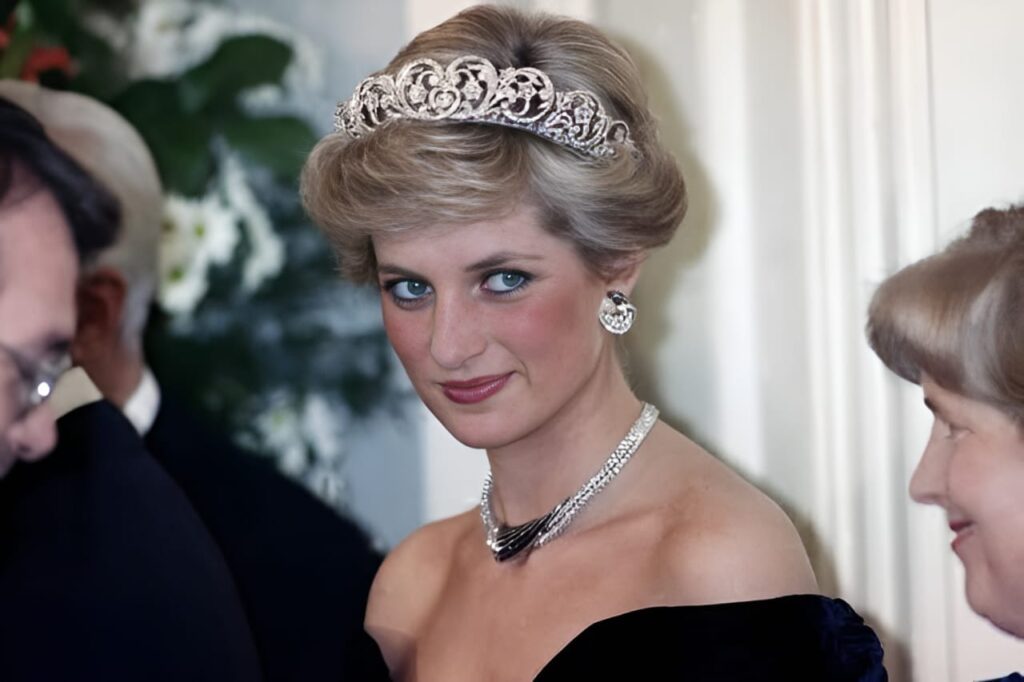
Personal Life
Marriage to Prince Charles
Diana’s marriage to Prince Charles was a union steeped in royal tradition but also fraught with challenges. They married in 1981, a lavish event that captured the hearts of millions. However, the relationship faced turmoil, leading to their separation in 1992 and eventual divorce in 1996.
The couple struggled with the pressures of royal life and differing expectations. While Diana sought to fulfill her royal duties with grace, Charles faced his own battles, including the weight of tradition and his feelings of obligation. The media’s relentless scrutiny added to the strain on their marriage, leading to a tumultuous relationship that ultimately ended in divorce.
Diana’s role as a royal was often overshadowed by her personal struggles. The pressures of living under constant public scrutiny took a toll on her mental health.
She faced challenges such as eating disorders and depression, issues she bravely addressed in interviews, bringing much-needed awareness to mental health.
Motherhood
As a mother to Prince William (born on June 21, 1982) and Prince Harry (born on September 15, 1984), Diana was determined to provide her children with a normal upbringing.
She emphasized the importance of hands-on parenting, often taking them on trips away from royal duties, which helped shape their perspectives on life and duty.
Diana’s parenting style was characterized by warmth and openness. She encouraged her sons to express their feelings and embrace their individuality, often breaking royal protocols to give them a more grounded experience.
This approach instilled confidence in William and Harry, allowing them to grow into compassionate and empathetic leaders.
Diana’s influence on her sons is evident in their charitable pursuits and commitment to social issues. Both William and Harry have continued their mother’s legacy through their philanthropic work, addressing mental health, climate change, and other vital causes. Their efforts reflect the values Diana instilled in them, showcasing her lasting impact on their lives.
Charitable Works
Humanitarian Efforts
Diana’s commitment to humanitarian causes was profound. She became involved with several organizations, including:
- British Red Cross
- Centrepoint (a charity aiding homeless youth)
- Leprosy Mission
- National AIDS Trust
Her efforts in AIDS awareness and landmine clearance were especially noteworthy. Diana famously walked through a minefield in Angola in 1997, bringing global attention to the issue and encouraging action.
This bold move challenged prevailing stigmas surrounding AIDS and showcased her commitment to humanitarian causes.
Diana’s compassion for those less fortunate was evident in her advocacy work. She visited hospitals, orphanages, and shelters, often spending time with patients and families. Her willingness to connect with those suffering resonated deeply, humanizing issues that many people overlooked.
Legacy of Kindness
Diana’s charitable work showcased her commitment to making a difference. She was not just a figurehead; she actively engaged with those in need, leaving a lasting impact on various communities.
The Diana Award, established in her memory, continues to honor young people who work to improve the lives of others.
Through her philanthropic work, Diana inspired countless individuals to get involved in charitable causes. Her legacy of kindness continues to motivate people around the world to contribute to social justice, health awareness, and equality.
Diana’s humanitarian efforts also included advocating for the rights of the people experiencing homelessness, mental health awareness, and support for those living with HIV/AIDS.
Her hands-on approach to charity helped break down barriers and foster understanding around these critical issues.
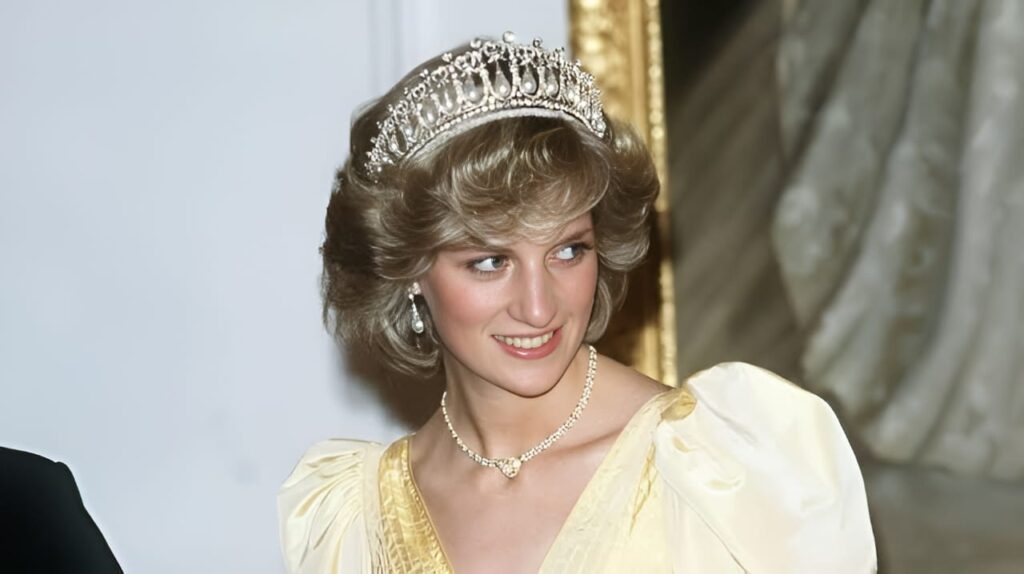
Cultural Impact
Global Influence
Diana’s influence transcended borders. She became a global ambassador for humanitarian issues, inspiring countless individuals to engage in charitable work.
Her ability to connect with people from different backgrounds and cultures made her a beloved figure worldwide.
Diana’s impact was particularly significant in promoting awareness around AIDS and landmines.
At a time when AIDS was heavily stigmatized, her willingness to embrace and support those affected changed public perceptions. She humanized the issue, encouraging compassion and understanding.
Enduring Legacy
Even after her tragic death on August 31, 1997, Diana’s legacy endures. Her work continues to inspire new generations of activists and philanthropists.
The values she embodied compassion, empathy, and a commitment to helping others remain relevant today.
Diana’s life story serves as a reminder of the power of kindness and the importance of using one’s platform for good. Her influence can be seen in various charitable initiatives and the ongoing work of organizations she supported.
The Diana Memorial Fountain in Hyde Park serves as a tribute to her lasting impact, inviting visitors to reflect on her life and contributions.
Moreover, the royal family has continued to honor her legacy. Both Prince William and Prince Harry have spoken about how their mother’s values guide their work and personal lives.
Their commitment to mental health awareness and charitable causes reflects Diana’s enduring influence.
Tragic End
Death
The world mourned the sudden loss of Princess Diana in a tragic car accident in Paris. The circumstances surrounding her death raised many questions and led to widespread media coverage and public grief.
Diana was in a car with Dodi Fayed when their vehicle crashed in the Pont de l’Alma tunnel. The ensuing chaos and speculation surrounding her death sparked investigations and conspiracy theories that continue to intrigue many.
The incident raised critical discussions about media ethics and the responsibilities of the press, particularly regarding privacy and the treatment of public figures.
Global Mourning
Diana’s passing sparked an unprecedented outpouring of grief. Millions gathered to pay their respects, leaving flowers and tributes outside Kensington Palace. Her funeral was watched by millions worldwide, a testament to her impact on the public.
The emotional response to her death highlighted the deep connection she had forged with people around the globe. It was a moment of collective mourning, reflecting the void her absence left in the hearts of many.
The public’s grief underscored not only their love for her but also their recognition of the kindness and compassion she brought to the world.
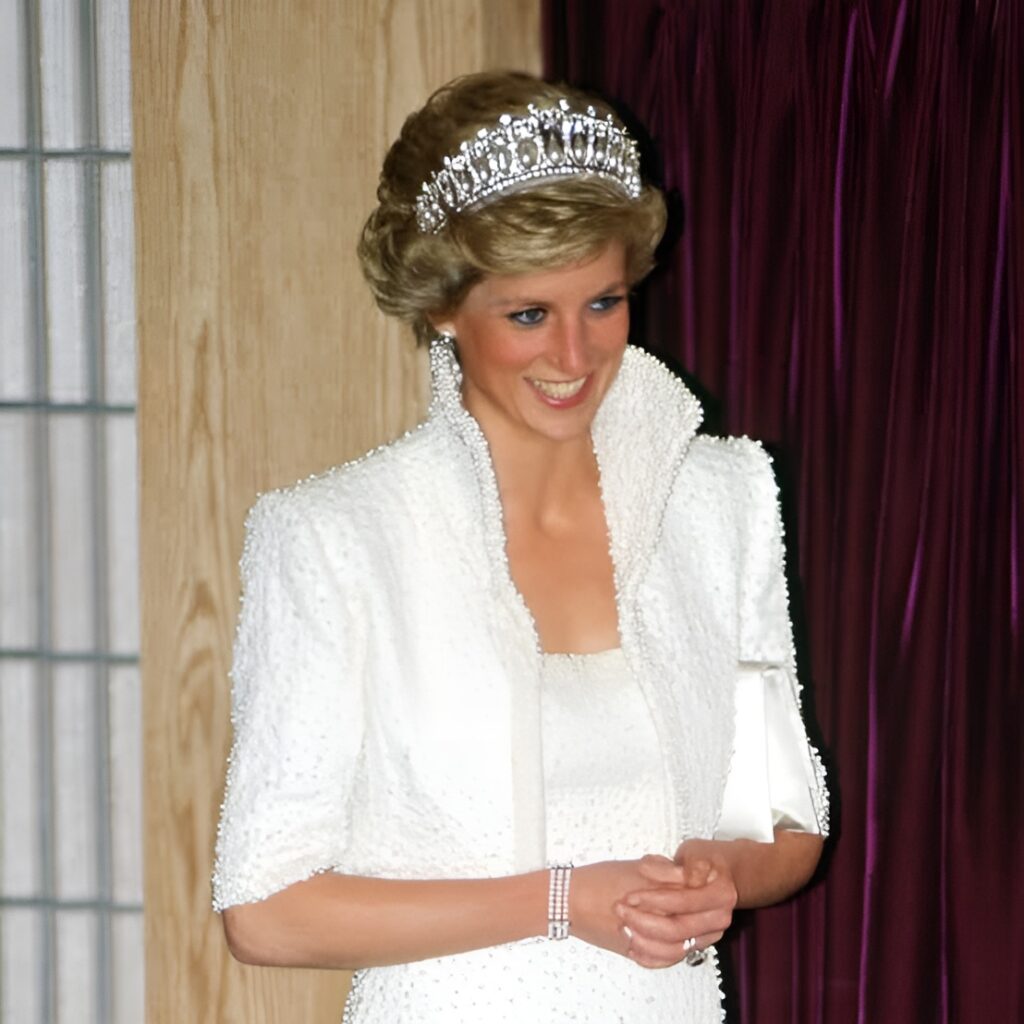
Conclusion
Princess Diana’s life was a tapestry of love, compassion, and resilience. From her iconic status as the Princess of Wales to her tireless humanitarian efforts, she remains a symbol of hope and kindness.
Her legacy continues to inspire and remind us of the power of empathy and the importance of giving back to society.
In celebrating her life, we honor not just the public figure but the warm-hearted woman who touched the lives of so many. Princess Diana will forever be remembered as a beacon of compassion and a true icon of the modern age.
Her story serves as an enduring reminder that even in the face of immense challenges, one can choose to lead with kindness and make a meaningful impact on the world.
As we reflect on her life, let us carry forward her legacy of compassion, advocacy, and unwavering commitment to making the world a better place. With each act of kindness, we honor her memory and strive to embody the values she held dear.
For more visit: https://styloceleb.com/

